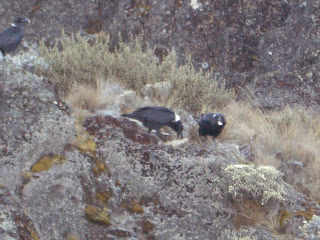

Brooding
Previous nest
If any young ravens have hatched, Sunshine will still brood them as they cannot control their body temperature yet, having no feathers. Their eyes are still closed and their pink bodies are only pinfeathered, ie. not yet plumed. Their bills are white-edged and they sleep most of the time except when fed.
Although their eyes (which will open blue, changing eventually to deep brown) are closed, the nestlings will hear a myriad of birdsong rising from the bush beneath them--the thrasher's complex lovely phrasing, the plaintive mew of the gnatcatcher, the shrill call of the quail, the seek, seeking of the black phoebe punctuated by the chee chee of Ana's hummingbird. Against the crash of the waves comes the clackity clack of the roadrunner, not to mention the crow's insistent caw. Along with the important parental voices, all these different signaling sounds start the raven off well, a bird known for its mimicry.
Besides the neighboring Cooper's hawks and their high kucking cries, crows are harassing the ravens more these days as they, too, are nesting. Ravens often fly low, searching for food while the crows dive bomb them from above. I have watched in amazement as Grog flips over to show the crow or hawk his feet and bill and then easily rights himself, all while still flying, a lesson he will teach his offspring in the coming months.














